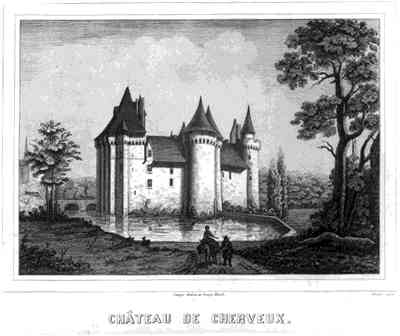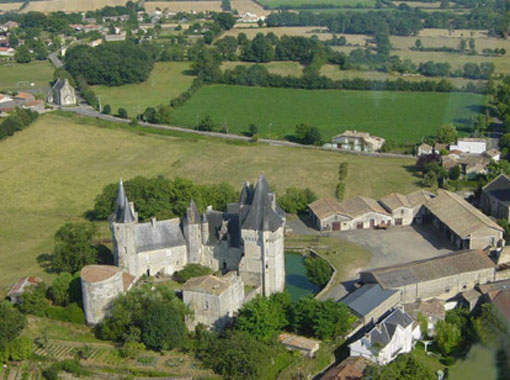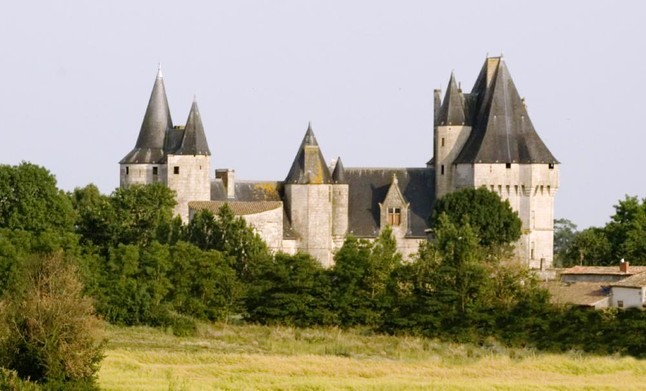Castle of Cherveux

Cherveux, France
Isolated in the middle of a fertile plain on a verdant plateau rises the village of Cherveux where the view embraces the most distant horizons. Its name has a celtic origin. The flint tools found on the plain bear witness to prehistoric inhabitation.

The present castle is situated upon the site of the original fortress built by the Lusignans; no doubt about its ancient origin since it is said that the "Fairy Melusine" was its ancestor.
In the Middle Ages, the Lusignan family became powerful, allowing one of its branches to ascend to the throne of Cyprus and Jerusalem at the beginning of the 13th century.
Hugues XI de Lusignan fell out with St. Louis who seized Cherveux in 1242 and gave it to his brother Alphonse, Comte du Poitou. Hugues proved his allegiance to his lord the king by accompanying him on the crusades. He died in a battle just after arriving in Egypt in 1249.
Their daughter Louise Chenin married Robert Conningham in May 1440. Of Scottish origin, captain of the bodyguard of king (extremely well in court at Louis XI) Cunningham (or Conygham according to texts' of the BNF) had the means to erect the whole of the present castle in one single effort about 1470.


One of the most beautiful features of the castle is the arrangement of the various buildings, which are joined, from the massive dungeon, by a succession of towers and turrets with cut-off corners. All together, they form a pentagonal composition, which is both tremendous and picturesque. In spite of its very ancient origin, the castle, several times ruined by wars, appears today much like it did in the second part of the 15th century. When the castle was originally built by Robert de Coningham a second surrounding wall reinforced with towers was constructed. This wall is no longer in existence.
During the wars, the neighbouring inhabitants could get protection from enemies and settle down inside this surrounding shelter with their families, their furniture and their herds. In return for this protection, they had to help with repairs and to mount guard.


Inside the castle a staircase allows you to reach the thick round tower that stands above the moat, which contains, on the first floor, the treasure room. It's a small room, badly lit by a single loophole. At the top of the ribbed vault are represented the Coningham's arms, "with the pairle" of Coningham (the pairle being the heraldic part in the form of a Y visible on this blazon). Sculptures also decorate the angles : a woman, a monk, a bat and an owl.

From the Castle of Cherveux webpage - please visit their site for more photos and information.





Copyright Cunningham Family Website - All Rights Reserved